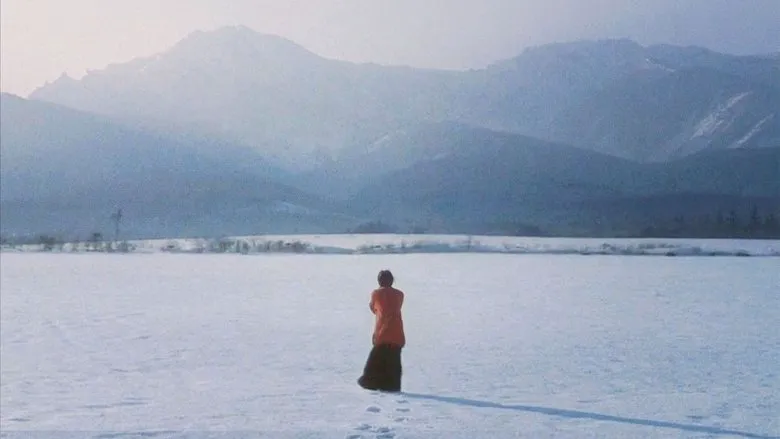Unlocking Hearts: Why “Love Letter” Still Resonates After All These Years
Some old lyrics go, “Can this old boarding pass get me on your ship?” In the context of cinema, specifically the timeless Japanese film “Love Letter,” a more fitting sentiment might be, “Can this old love letter unlock your heart?”
Re-released recently, this 1995 gem continues to captivate audiences across generations. With a remarkable score of 8.9 on Douban, and having been marked as “watched” by over 1.93 million people, “Love Letter” has solidified its place as a classic in the realm of Asian romantic films.
In today’s cinematic landscape, where special effects often take center stage, “Love Letter” distinguishes itself by weaving a poignant narrative with simple yet powerful elements: an unsent letter, the pristine beauty of a snow-covered landscape, and a subtle sketch on the back of a library card. These understated elements draw viewers into a world of profound emotions, proving that cinematic magic doesn’t always require elaborate visual spectacles. The film’s enduring appeal begs the question: Why does this seemingly simple story continue to resonate so deeply with audiences, transcending time and cultural boundaries?
The Subtlety and Beauty of Eastern Aesthetics
“Love Letter” adopts a narrative style akin to a haiku, using minimalist imagery to convey complex emotions. The film eschews straightforward confessions, opting instead for visual symbols that complete the “meta-language expression” of emotion.
In one scene, Hiroko Watanabe lies still in a field of white snow, a picture of stillness representing so much emotion. In another, the youthful Fujii Itsuki appears momentarily behind the curtains of a library window, a fleeting image representing memories of the past. These visual cues allow viewers to engage with and project themselves into the emotional space of the film.
The film’s aesthetic sensibilities shine in the details, particularly in the young Fujii Itsuki’s subtle gestures of affection. By writing his name on 87 library cards and concealing a sketch of himself in the last book, “Remembrance of Things Past,” he embodies the Eastern cultural principle that “words have limits, but meaning is infinite.” This method of entrusting emotions to objects is particularly precious in contemporary times, when the fast pace of modern life often overshadows the beauty of subtlety and the power of suggestion.
In an era dominated by the immediacy of short videos and fleeting trends, the “incompleteness” of “Love Letter” becomes an emotional container. Viewers can project their secret love memories onto young Fujii Itsuki’s silence.
Self-Healing Through Memories and Reconciliation
“Love Letter” transcends the boundaries of a simple youth love story by exploring themes of life and death, memory and reality through a dual narrative. Hiroko Watanabe’s quest to trace her deceased fiancé’s past through letters becomes a journey of self-discovery as she confronts her own emotions and grapple with her loss. Similarly, young Fujii Itsuki pieces together the neglected secret love in her memories. By confronting the past through the correspondence and the uncovering of youthful affections, she begins to heal the trauma of her father’s death, finding solace and closure in the shared memories of love and loss.
The film’s depiction of death is not tragic but as a starting point that allows the deceased to participate in the lives of the living through memory fragments. Between the interweaving of these recollections, young Fujii Itsuki’s feelings for the other Fujii Itsuki is gradually revealed, and Hiroko slowly emerges from her emotional constraints. Her eventual cry of “How are you? I’m fine” in front of the snow mountain symbolizes both a farewell to the deceased and a self-reconciliation with her so-called “substitute” identity.
From Screen Classic to Cultural Touchstone
The influence of “Love Letter” goes beyond cinema. Mt. Tengu in Otaru, Hokkaido, has become a check-in spot for Asian youths. On social media, “Love Letter style” copywriting and library window imitation challenges continue to trend. In a world of algorithmic recommendations, the “slowness” of “Love Letter” has become a commodity, making the film special.
The film refuses to spoon-feed answers, only presents emotions. Some viewers have said, “We are not moved by the story, but by our own unspoken youth.” This kind of feedback demonstrates “Love Letter’s” charm: it reminds people of youth.
Missed confessions, sealed feelings, regrets… Shunji Iwai freezes these moments into emotional specimens, allowing the audience to see their own regrets and growth in the stories of others.
As the piano music fades at the end of the film, what remains in the hearts of viewers is not a specific plot point, but “what is love?” Just like the unspoken confession in the film, true love never needs to be earth-shattering, but it always shines silently.